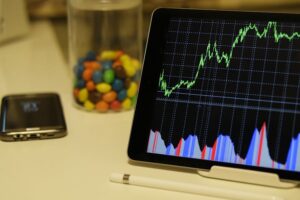One of the biggest trends post-Covid-19 is the work from home (WFH) concept. Today, more and more companies and organizations are allowing their employees to work remotely, having proved that it enhances productivity when properly managed; of course, alongside encouraging social distancing.
But with it comes a challenge; monitoring employees to ensure that they are spending their time doing what the company pays them to do. This has led to the rise in the use of employee monitoring software such as Soft Activity to track their employees, especially those who work from home.
Employee monitoring offers a lot of advantages, from increased productivity to objective performance review and even enhancing employee engagement. However, if not done correctly, employee monitoring can be a disadvantage to your organization especially when employees feel like they are being spied on all the time.
In this article, we will cover six crucial things you should do before starting to monitor employee activity to ensure you reap all the benefits.
Let’s dive straight in!
Set Up A Clear Monitoring Policy
Before you roll out a tracking system for your company, first inform your employees of every way you intend to monitor them. Hold a meeting with them and address any concerns they may have about the App for time tracking or monitoring.
If an employee has a valid concern about a specific area in the employee monitoring, consider editing it or removing it from the policy altogether. It would be a good idea to have your employees come up with the monitoring policies so that they feel a sense of ownership.
Ensure that you build trust with your employees such that they don’t feel like you are monitoring them intending to punish them if they do something wrong or are not productive.
Besides, make sure to use collected data only for the reasons stated in the monitoring policy. This way, you gain your employees’ trust. Information collected should be only that which is related to your business or organization directly. Aim to monitor, not surveil.
Respect Privacy
Make sure that while you are monitoring your employees, you don’t invade their privacy. For starters, all personal devices should not be tracked. If employees use personal devices for work, use an employee monitoring solution that limits data collection to working hours only.
To avoid capturing personal computer activity, limit monitoring to internal network traffic as opposed to directly monitoring all devices connecting to the network. This way, you avoid capturing perianal and sensitive information like passwords and bank card information.
Protect Employee Monitoring Data
Data collected for employee monitoring is highly sensitive. Ensure you protect it from malicious parties.
Organizations can protect this data by:
- Deleting data that is no longer useful to the organization.
- Train managers with access to employee monitoring data on how to handle it while respecting the employees’ privacy.
- Use USB device control measures to prevent data theft.
- Ensure that the data is available only to a few privileged individuals.
Use Data Objectively When Monitoring Employees
Refer to aggregated data when reviewing performance instead of focusing on the computer usage of individuals. Computer usage can be used when addressing objectionable practices like using work devices to visit pornographic or other illicit sites.
Furthermore, don’t use computer activity as the sole tractor of employee productivity. Put into consideration other job adjacent tasks such as creative thinking, phone calls, and planning that are often not reflected in computer activity data.
Significant decisions such as promotions and salary increases should also be done with care. Avoid using computer activity as your basis when making such high-impact decisions.
Use Employee Monitoring To The Advantage Of Employees
A recent study by Accenture business found that 92% of employees view employee monitoring positively and are open to it if it is beneficial to them. Consider some tangible benefits employee monitoring can bring your employees like:
- Flexibility in working styles and schedules
- Self-monitoring
- Spotlighting productive employees
- Better resource allocation and management
Make it clear to your employees that monitoring will be beneficial to them and is not aimed to keep an eye on them or punishing them for poor performance. Additionally, use it to help employees who may be struggling by allocating more resources to them or grouping them with better-performing employees.
Seek Legal Advice
Before setting up an employee monitoring software in your organization, ensure you get proper legal advice. You will most likely be required by the law to conduct a data protection impact assessment (DPIA).
A DPIA considers all aspects of the data processing and identifies any risks and provides ways to mitigate them. Different states have different rules around employee monitoring. It is therefore important to conduct your due diligence before starting employee monitoring in your organization.
Conclusion
Employee monitoring can bring immense benefits to your organization if done transparently and ethically. We hope that the above tips will help be of benefit as you consider implementing them in your organization. Good luck!





















